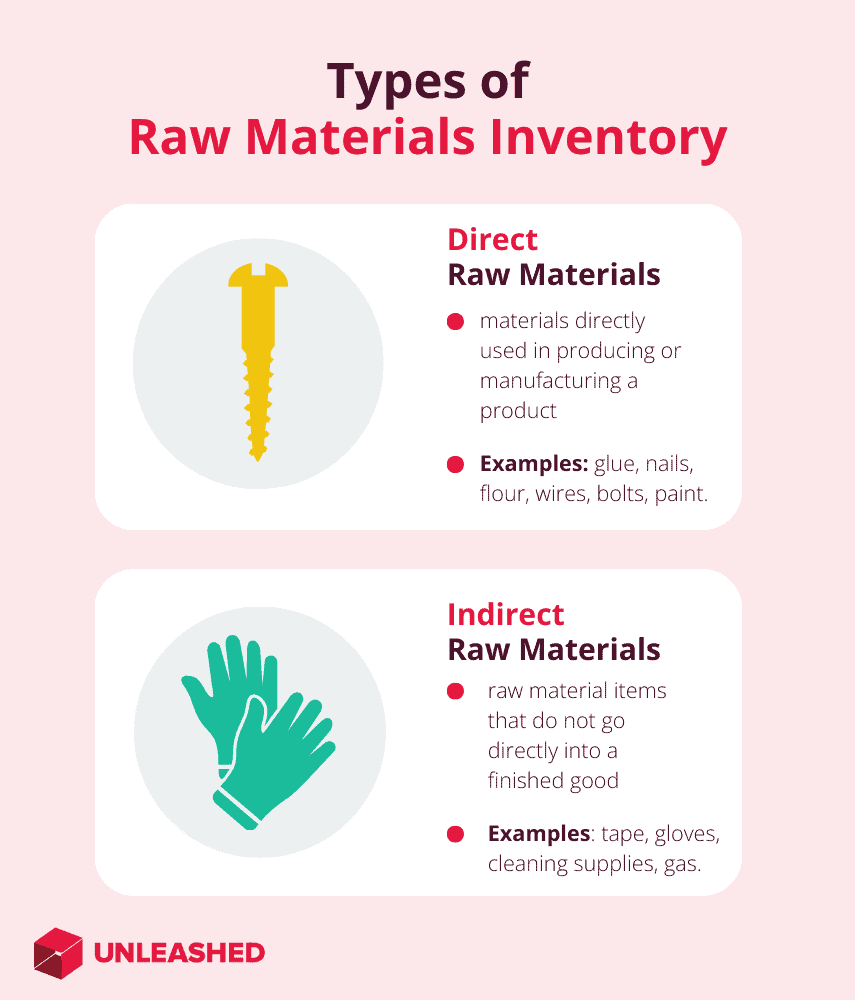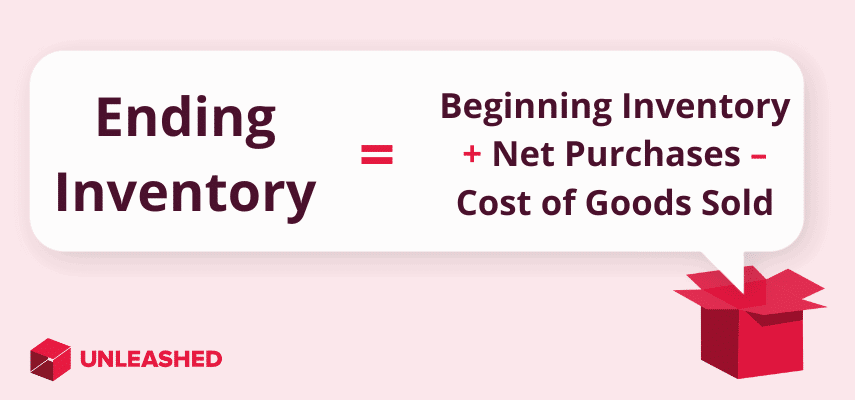
Every manufacturer knows the importance of raw materials – without them, there’s no final product. But it’s not easy keeping track of all the essential elements needed to keep the production line productive.
Raw material inventory management oversees the procurement, handling, and storage of raw materials. It ensures you maintain optimal raw materials inventory levels, and therefore plays a crucial role in optimising your manufacturing processes.
This guide explores the ins and outs of managing raw materials in a manufacturing business, with examples and actionable tips for improving your processes. Let's dive in.
What is raw material inventory management?
Raw material inventory management is the process of managing the material goods used to create a product. It aims to ensure you always have enough raw materials available to meet demand and maintain production levels while avoiding operational lost time.
By accurately controlling the inventory levels of raw materials, manufacturers can achieve two goals at once:
- Bring costs down (by limiting the required storage space for raw materials to a minimum)
- Complete production jobs and fulfil orders faster (by reducing the risk of understocked items)
Raw materials inventory management deals with raw materials stock throughout the entire supply chain. It encompasses the processes involved in purchasing, tracking, consuming, and relocating raw materials.
Without an effective system in placing for managing raw materials inventory, there’s a good chance you will end up overstocked – and pay extra in storage costs – or understocked and unable to produce goods when you need them.
Definition of raw material
Raw material can be defined as any unprocessed materials or ingredients used to create a product. It refers to commodities bought and sold by businesses for the purpose of manufacturing goods to be sold or used in the production of products. For example, the raw materials used to produce a child's toy may include plastic, wood, paint, and glue.
Examples of raw material inventory
Raw material inventory refers to the materials and ingredients used in manufacturing and production. In other words, raw materials are input goods or inventory which manufacturers use to produce their products.
When it comes to production, there are two ways raw materials can be used – and so two ways of classifying raw material goods.
Let’s break down the two main types of raw material inventory with some examples:
- Direct materials: Direct raw material inventory refers to materials directly used in producing or manufacturing a product. It is a part of the bill of materials for the finished goods. For example, the direct raw materials for LED lights can include LED boards, connection wires, rectifier circuits, soldering flux, LED chips, and packaging.
- Indirect materials: Indirect raw material inventory refers to the supplementary items that are needed in the production process but do not go into the finished product itself. Indirect materials are not part of the product’s bill of materials. The indirect raw materials for a manufacturer of LED lights can include drill bits for machining, disposable gloves, and cleaning supplies such as mops or detergent.

Why inventory management of raw materials and finished goods is important for manufacturers
Inventory management is critical for manufacturers when dealing with raw materials and finished goods because it has a direct impact on workflow efficiency and production costs.
When you know the value, location, and quantities of your stocked items you’re in a better position to make informed decisions around procurement and sales – ultimately resulting in reduced production costs and improved profitability.
On the flip side, if you fail to implement strategic inventory management for your raw materials and finished goods your manufacturing costs will go up. Productivity will also take a hit, as your processes will not be optimally streamlined.
Raw material inventory management challenges
Managing raw material inventory can be a complicated task.
Even firms with smaller production volumes can struggle due to limited resources or inefficient processes.
To mitigate the associated risks, these challenges of raw material inventory management must be met with strategic planning, effective inventory management, and strong supplier relationships.
Let’s look at four of the biggest raw material inventory challenges you’re likely to face.
1. Inventory planning
Planning inventory is a common challenge for manufacturers due to factors such as demand variability, product lead times, and supply chain disruptions.
Poor planning can result in overstocking of goods, which is an inefficient and costly use of your storage capacity. And it can also result in understocking, meaning you’re unable to reliably fulfil customer orders in full and on time.
Effective inventory planning is essential to ensure you have the right inventory quantities to keep your operations running smoothly. Demand forecasting tools, accurate inventory reporting and an optimised warehouse layout can all help improve your inventory planning.
2. Financial constraints
Financial constraints that reduce the opportunity to invest in large quantities of raw materials affect your ability to negotiate price and delivery times with suppliers.
Balancing inventory costs with cash flow constraints can also be a challenge.
While budgetary restrictions can stop you from taking advantage of volume discounts offered through bulk purchasing, holding too much inventory ties up cash flow that could be better used elsewhere in the business.
Your best defence against cash flow challenges is to minimise the amount of capital tied up in stock. This is achieved through accurate demand planning and effective warehouse management.
3. Reliance on a few suppliers
How you procure and manage your suppliers will impact how they perform.
Manufacturers can experience disruptions to production when raw materials suppliers have issues with production, delivery delays, or price fluctuations. This is particularly challenging for producers of perishable products or products with a short shelf life.
It can be helpful to have backup suppliers should your regular vendor have any issues fulfilling an order. Similarly, it’s important to set accurate safety stock levels for all of your regular inventory items.
4. Quality control
Quality control to guarantee the consistent quality of raw materials from suppliers is also a challenge for manufacturing companies.
Maintaining outstanding quality control is imperative for food manufacturers where freshness and food safety are vital. And for manufacturers of medicines, supplements, and nutraceuticals, quality control ensures the purity of active ingredients.
Additionally, the value of your finished product is partially determined by how well you manage the quality control of your raw material inventory.
An optimised raw material inventory management strategy can aid in ensuring high-quality goods are produced every time.
How to manage raw material inventory
Managing raw material inventory can be simplified if you employ an inventory management system in your business. Inventory software solutions will provide you with a real-time view of your inventory – what’s in stock, what’s being delivered, and what is on backorder.
If you’re a small business, you may find a simple spreadsheet system sufficient for getting started. But as you grow in complexity and scale, you’ll probably find that this method requires too much admin or can’t do everything you need it to.
Cloud-based manufacturing software can help you not just manage raw materials inventory but also automate many of your daily production and procurement processes as well.
(Watch more inventory software demos from Unleashed.)
In addition to raw material inventory systems, here are some techniques you may find useful.
Raw material inventory management techniques
The raw material inventory management techniques listed below are methods for monitoring and optimising stock. Consider your specific business requirements and capabilities before deciding which techniques to implement.
Five effective raw material inventory management techniques:
- Just-in-time (JIT) – JIT is an inventory management technique that helps reduce inventory-related manufacturing costs. This approach aims to improve manufacturing productivity while reducing waste by producing only what is needed when it’s needed.
- Demand forecasting – Demand forecasting involves determining the approximate quantities of stock you’ll need for a future period based on historical performance and other factors. When done accurately, it ensures that you have the right amount of inventory on hand to satisfy customer expectations.
- Economic order quantity (EOQ) – EOQ is an inventory management technique that considers the ordering, holding, and storage costs of inventory. EOQ helps manufacturers establish the ideal order quantity of their raw materials to reduce overall inventory costs while managing to ensure sufficient on-hand inventory to meet consumer demand.
- Six Sigma – Six Sigma is an inventory management technique that centres around reducing inventory defects and variations. Six Sigma takes a data-driven approach and uses statistical analysis to identify and eliminate unnecessary steps, thus improving efficiencies within your inventory management process.
- Materials requirement planning (MRP) – MRP is an inventory management method that is sales-forecast dependent. It’s used to estimate the quantities of raw materials required to maintain your inventory levels sufficiently to meet your production needs.
These are just a few of the ways you can manage your raw materials inventory. We recommend diving deeper into the topic of inventory management techniques to find the right solution for your unique needs.
- Learn more: ERP vs MRP Systems – What's the Difference?
Best practices for managing raw material inventory
Once you’ve settled on your approach for managing raw material inventory, the next step is to optimise it. Here are some best practices to help you improve your processes:
- Develop a system of stock-keeping units (SKU). This is done by allocating each type of raw inventory item a unique code. SKUs are the basis of efficient inventory management, as they help you to track the movements and current inventory levels of all stocked items.
- Utilise an inventory control system for raw materials. Good inventory control is crucial to tracking and managing your inventory levels, raw material reorder points, and raw material inventory lead times.
- Adopt a data-driven approach to your inventory management. Data-driven strategies improve reporting, providing you with a more accurate picture of your inventory status. They also help you to make better-informed decisions about your inventory needs.
- Avoid understocking and overstocking inventory. Understocking can lead to stockouts and lost production time, while overstocking may result in lost sales and dissatisfied customers. Overstocking can also lead to increased carrying costs that affect your cash flow and profitability. Both are undesirable outcomes, so setting optimal inventory levels early on is vital.
- Improve your inventory data by automating operations. Automation can help you improve the accuracy of your inventory management operations and reduce the risk of human error. Research systems and tools that could help with your production processes.
- Focus on the raw material inventory items that are critical to your business operations. Use inventory ratios and KPIs to help determine which items add the most value or are the most essential to your business. These are the raw materials that you should care about the most.
- Be precise with your cost estimations for raw material inventory. Accurate cost estimations are essential for effective inventory management. Be sure to include all costs associated with acquiring, storing, and managing your raw materials when calculating total manufacturing costs.
In general, prioritise accuracy and efficiency when dealing with raw materials inventory.

Inventory accounting for raw materials
In accounting, raw materials inventory refers to the total cost of all material currently on hand that has not been used in any production processes. The value of direct raw material inventory is recorded as a current asset on your balance sheet.
Accurately accounting for raw materials gives you a better insight into your business's financial health and helps you to keep track of your inventory investment throughout your production processes.
Let’s look at a few accounting metrics you may find useful when dealing with raw materials inventory management.
Useful metrics for raw material accounting
These raw material inventory metrics can help you to make more informed business decisions and help to enhance your business operations.
Some useful metrics to help you keep track of your raw material inventory accounting include:
- Inventory turnover ratio: This measures the number of times you sell and replace your raw material stock over a specified timeframe. This metric helps you to determine if you are carrying too much inventory compared to the amount of inventory you’re selling.
- Days on hand: The average number of days it takes to sell your inventory. Days on hand measures the rate at which your inventory turns daily. This metric helps you determine how quickly and efficiently your business is using its raw material inventory.
- Weeks on hand: This metric shows the average amount of time inventory sells each week. A greater number of weeks on hand indicates inefficiencies in your stock movement, while fewer weeks on hand indicates a more efficient turnover of your inventory.
How to calculate your raw materials inventory value
Whatever the size of your manufacturing business, you’ll need to account for your raw materials, business supplies, and finished goods. You can do this by first determining your ending raw materials inventory value at the end of each accounting period.
To determine ending raw materials inventory, add your opening inventory for the period to your net purchases and subtract the total cost of goods sold.
This will tell you the final value of your raw materials inventory for the period.
The formula for valuing ending raw materials inventory is:
Opening Inventory + Net Purchases – COGS = Ending Inventory

Raw material inventory management software
Raw material inventory management software refers to digital systems designed to help you streamline your inventory processes and optimise your inventory control processes.
These systems can come in all shapes and sizes. Some will help with the tracking of your raw material goods, while others may also offer production management and procurement functionality.
Key features to look for in raw material inventory software:
- User-friendly, easy to navigate, and has an intuitive interface that allows you to quickly access the information you need.
- Scalable to grow with your business, meet your production needs, and capable of handling large volumes of data.
- Consolidative to easily integrate with other business applications, accounting software, and sales management systems.
- Instantaneous with real-time visibility and tracking of inventory levels, so you can identify any issues quickly and take any necessary corrective action.
- Secure enough to protect your information from unauthorised access.
Can you perform raw material inventory management in Excel?
Yes, Excel offers several ways to perform raw material inventory management. But as we’re about to explain, these tools can be limited and may hinder productivity for large or complex organisations.
Excel can be a great tool for beginners or firms with limited inventory.
Using Excel’s customisable spreadsheets and formulas you can create an inventory management system with interactive functionality that allows you to create raw material inventory reports. Excel offers many ways to sort, explore, and extract this data.
The results can be visually presented in charts and tables. With the Power Pivot add-on, you can also import and analyse large amounts of data from various sources to create more complex reports.
However, one of the key disadvantages of performing raw material inventory management in Excel is its limited scalability. Keeping track of your inventory control spreadsheets as your production and sales increase can become time-consuming.
Another downside is that Excel needs to be manually updated whenever there are changes to your stock levels; it cannot provide you with inventory levels in real time. Manual data entry is prone to human error with data entry errors leading to inaccurate inventory records and potentially resulting in stockouts or overstocking.
Excel also lacks the built-in features for tracking historical data to identify patterns and analyse trends, which help you to make informed, data-driven decisions.
More posts like this:
